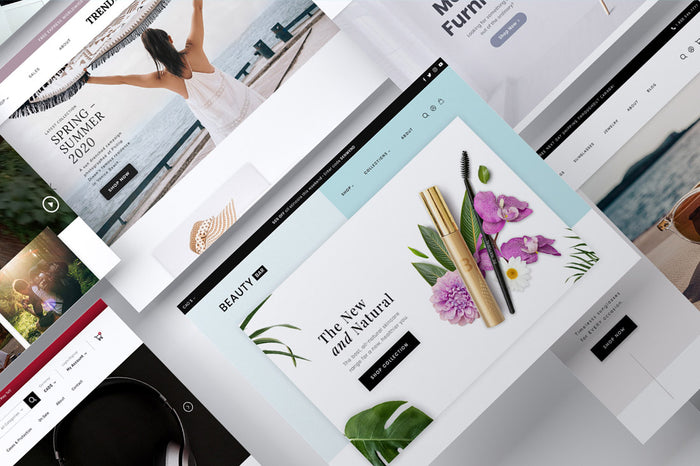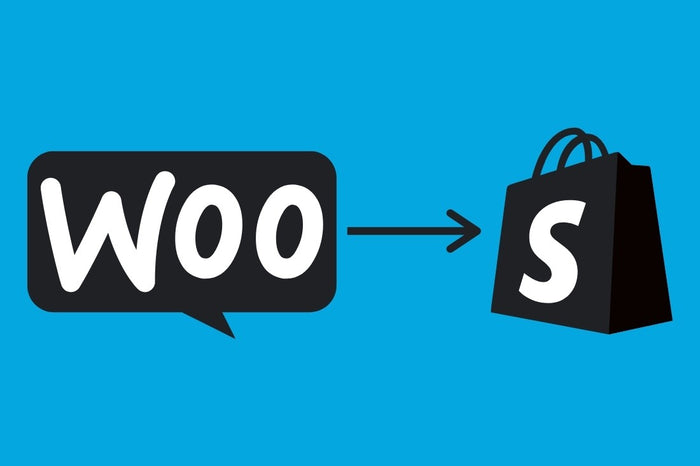Building your personal brand can be uncomfortable. It feels natural to sell a product or an idea, but selling ourselves feels like an entirely different (and strange) beast.
However, you can intentionally build your personal brand without feeling phony by selling all the best parts of your personality.
Whether you’re new to the world of personal branding or you’ve been cultivating your brand for years, this guide will help you achieve your branding goals while staying true to yourself.
In this article, we’ll explore:
- What personal branding is;
- The benefits of personal branding;
- Seven tips for how to build an authentic personal brand; and
- A case study of a great personal brand.
What is Personal Branding?

Personal branding involves crafting a narrative around who you are as a person or a professional. Do you love home decor? Small business? Cooking? Fashion? Web design? Organic gardening? The environment? It's important to have a clear understanding of your passion and how that will translate to your audience.
Effective personal branding involves:
- Building and interacting regularly with your network;
- Putting a real person and face to a product or business; and
- Authenticity to truly connect with your audience.
Four Benefits of Developing Your Personal Brand
 So, why should you put time and effort into developing your personal brand?
So, why should you put time and effort into developing your personal brand?
Here are four ways you can benefit directly from building a strong personal brand.

Establish trust and credibility
By fostering a successful personal brand, you’ll be seen as a trusted voice and subject matter expert in your field.

Build your network
When you’ve made it clear to new contacts who you are as a person or professional and what you bring to the table, it’s much easier for them to see the benefits of connecting with you.

Attract more business
The more your network grows and the more you build your profile within your industry, the more business you’ll generate.

Create a lasting business pipeline
Your successful personal brand can help keep your business alive and well for years to come, especially as your brand grows and evolves.
7 Tips for Building Your Authentic Personal Brand
 Now that you’re more familiar with what a personal brand is and how you’ll benefit from building yours, here’s how to put a personal brand plan into action.
Now that you’re more familiar with what a personal brand is and how you’ll benefit from building yours, here’s how to put a personal brand plan into action.
Set clear goals for yourself
 If you want your personal brand to come across loud and clear to your audience, start by making it clear to yourself.
If you want your personal brand to come across loud and clear to your audience, start by making it clear to yourself.
Figure out your vision and mission to identify what you hope to achieve with your personal brand and what that will look like. Your vision and mission should be informed by your values and what will set you apart from the crowd.
From there, create targeted goals to help realize your vision.

Tip: When setting your goals, make sure that they’re SMART. This means that your goals are:
- Specific;
- Measurable;
- Achievable;
- Realistic (but Relevant also works); and
- Timely.
For example, if you’re a marketing professional looking to fly solo, ask yourself: what is it specifically I’d like to achieve as a freelance marketing professional? Perhaps accessibility is a passion of yours. Therefore, your mission and vision could involve helping businesses improve the accessibility of their marketing content.
An example of a SMART goal could then be to find five new clients in the next six months.
Tell an authentic story
 Storytelling is one of the most effective ways to deliver a message. It’s an extremely powerful way to create connections with your audience.
Storytelling is one of the most effective ways to deliver a message. It’s an extremely powerful way to create connections with your audience.
Telling your story will not only help your audience understand who you are, but also share a bond with you over your shared experiences.
Tip: Start by telling the story of how you got to where you are today. For example:
- Did you have a rocky path to get to where you are now?
- How did you discover your passion?
- How did you start your company?
People are naturally curious. So, sharing your story and showing how you got to where you are today will fulfill that curiosity and will help separate you from the crowd. This is especially true if you’ve faced a difficult journey along the way.
Create meaningful, useful content
 On top of powerful stories, another key to adding value in your space and establishing your personal brand is through meaningful, useful content marketing.
On top of powerful stories, another key to adding value in your space and establishing your personal brand is through meaningful, useful content marketing.
Based on the path you’ve chosen and the goals you’ve set, create content online across multiple channels to firmly plant your flag in your industry.
Some examples of content you could create include:
- Tips and tricks or best practices related to your industry;
- Visual content, like photos or videos, showing examples of products or services you’ve delivered to clients;
- Inspirational articles such as powerful quotes or remarkable stories;
- Opinion pieces;
- Tutorials or how-to guides; or
- Case studies.
Useful content marketing can generate traffic to your website and help potential customers or clients see the value in following or hiring you.
Mind your social media
 Social media is one of the easiest ways to market your content. But how best to use each social platform will be dependent on your goals and your audience.
Social media is one of the easiest ways to market your content. But how best to use each social platform will be dependent on your goals and your audience.
Tip: Start by conducting an audit of your current social media presence. Are there certain posts you should delete? Are you not posting enough? Is it worth maintaining a profile on this particular social network?
The best way to answer these questions is by figuring out where your target audience is--are they on Facebook? Twitter? Instagram? LinkedIn?
Also, while you should go for some consistency, don’t simply replicate your content across your profiles. Be mindful of creating unique content and the message you share across each social media platform.
And for social media accounts that you wish to keep private, consider locking your profile and hiding it from searchability within the platform.
Share your successes
 Like we mentioned earlier, tooting your own horn can feel awkward.
Like we mentioned earlier, tooting your own horn can feel awkward.
However, sharing big milestones with your network and sharing your journey around that milestone helps your audience get to know you and your values.
For example, say you gave a keynote speech to your largest audience yet, or you finally finished your MBA. Don’t hesitate to share a photo of your presentation or a photo of your certificate!
Not only will your audience be happy for you and your accomplishments, but it’ll help establish your credibility within your field.
Be active in different communities
 The wider the spread of your network, the wider you’re able to spread your message to your target audience. Don’t be afraid to put yourself out there!
The wider the spread of your network, the wider you’re able to spread your message to your target audience. Don’t be afraid to put yourself out there!
If you’ve got your hands in multiple cookie jars when it comes to your areas of expertise, consider:
- Joining multiple networking groups;
- Attending events related to your different areas of expertise;
- Volunteering with various professional associations; or
- Joining online forums or groups.
Tip: Do some research around the different networking groups in your area for professionals or subject matter experts in your field.
Don’t forget: quality over quantity is important. You don’t want to spread yourself too thin or over-commit yourself to too many networks.
Measure your efforts
 If you’re actively creating content and posting on social media, measure your efforts to determine whether you’re achieving your goals.
If you’re actively creating content and posting on social media, measure your efforts to determine whether you’re achieving your goals.
Tip: Identify KPIs (Key Performance Indicators) when setting your goals for your personal brand. This could be:
- Shares on your blog or social media posts;
- Revenue generated;
- New connections/followers on social media; or
- Traffic to your website.
For example, to find five new clients in six months, you might decide to write blog posts around accessible web content to establish yourself as an expert in the subject.
You may then wish to ask yourself:
- Is my web traffic increasing as a result of my blogs?
- Are new clients finding me through my blog posts?
- Based on the answers to these questions, should I continue with my efforts, change them or stop them?
By measuring your personal branding efforts with KPIs, you can maximize the time you invest into your brand.
Start Building Your Personal Brand

Now that you have tools to start setting your goals, creating content and getting your name out there, are you ready to start crafting your personal brand?
If you’re looking to become an influencer in your space, check out our personal branding guide for influencers.
Otherwise, if you’re looking marketing tips or want to build a website to develop your personal brand, here are some other Marketplace Solutions blog posts to help you get started:






